Entry Database : PDB / ID : 2mhoTitle Solution State Structure PSD-95 PDZ1 with 5HT2C Receptor peptide Disks large homolog 4 peptide from 5-hydroxytryptamine receptor 2C Keywords / / / Function / homology Function Domain/homology Component
/ / / / / / / / / / / / / / / / / / / / / / / / / / / / / / / / / / / / / / / / / / / / / / / / / / / / / / / / / / / / / / / / / / / / / / / / / / / / / / / / / / / / / / / / / / / / / / / / / / / / / / / / / / / / / / / / / / / / / / / / / / / / / / / / / / / / / / / / / / / / / / / / / / / / / / / / / Biological species Rattus norvegicus (Norway rat)Method / Model details closest to the average, model5 Authors Dorr, L.A. / Phelan, M.M. / Lian, L. Journal : To be Published Title : Interactions of the 5-Hydroxytryptamine Receptor 2a and 2c Variants with the PSD-MAGUK proteins, PSD-95 and SAP997Authors : Dorr, L.A. / Phelan, M.M. / Lian, L. History Deposition Nov 29, 2013 Deposition site / Processing site Revision 1.0 Mar 12, 2014 Provider / Type Revision 1.1 May 1, 2024 Group / Database referencesCategory chem_comp_atom / chem_comp_bond ... chem_comp_atom / chem_comp_bond / database_2 / pdbx_nmr_software / pdbx_nmr_spectrometer / struct_ref_seq_dif Item _database_2.pdbx_DOI / _database_2.pdbx_database_accession ... _database_2.pdbx_DOI / _database_2.pdbx_database_accession / _pdbx_nmr_software.name / _pdbx_nmr_spectrometer.model / _struct_ref_seq_dif.details
Show all Show less
 Open data
Open data Basic information
Basic information Components
Components Keywords
Keywords Function and homology information
Function and homology information
 Authors
Authors Citation
Citation Journal: To be Published
Journal: To be Published Structure visualization
Structure visualization Molmil
Molmil Jmol/JSmol
Jmol/JSmol Downloads & links
Downloads & links Download
Download 2mho.cif.gz
2mho.cif.gz PDBx/mmCIF format
PDBx/mmCIF format pdb2mho.ent.gz
pdb2mho.ent.gz PDB format
PDB format 2mho.json.gz
2mho.json.gz PDBx/mmJSON format
PDBx/mmJSON format Other downloads
Other downloads 2mho_validation.pdf.gz
2mho_validation.pdf.gz wwPDB validaton report
wwPDB validaton report 2mho_full_validation.pdf.gz
2mho_full_validation.pdf.gz 2mho_validation.xml.gz
2mho_validation.xml.gz 2mho_validation.cif.gz
2mho_validation.cif.gz https://data.pdbj.org/pub/pdb/validation_reports/mh/2mho
https://data.pdbj.org/pub/pdb/validation_reports/mh/2mho ftp://data.pdbj.org/pub/pdb/validation_reports/mh/2mho
ftp://data.pdbj.org/pub/pdb/validation_reports/mh/2mho Links
Links Assembly
Assembly
 Components
Components


 Sample preparation
Sample preparation Processing
Processing Movie
Movie Controller
Controller




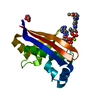

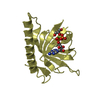
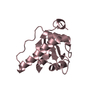
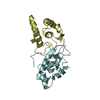


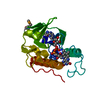
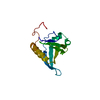
 PDBj
PDBj











 HSQC
HSQC